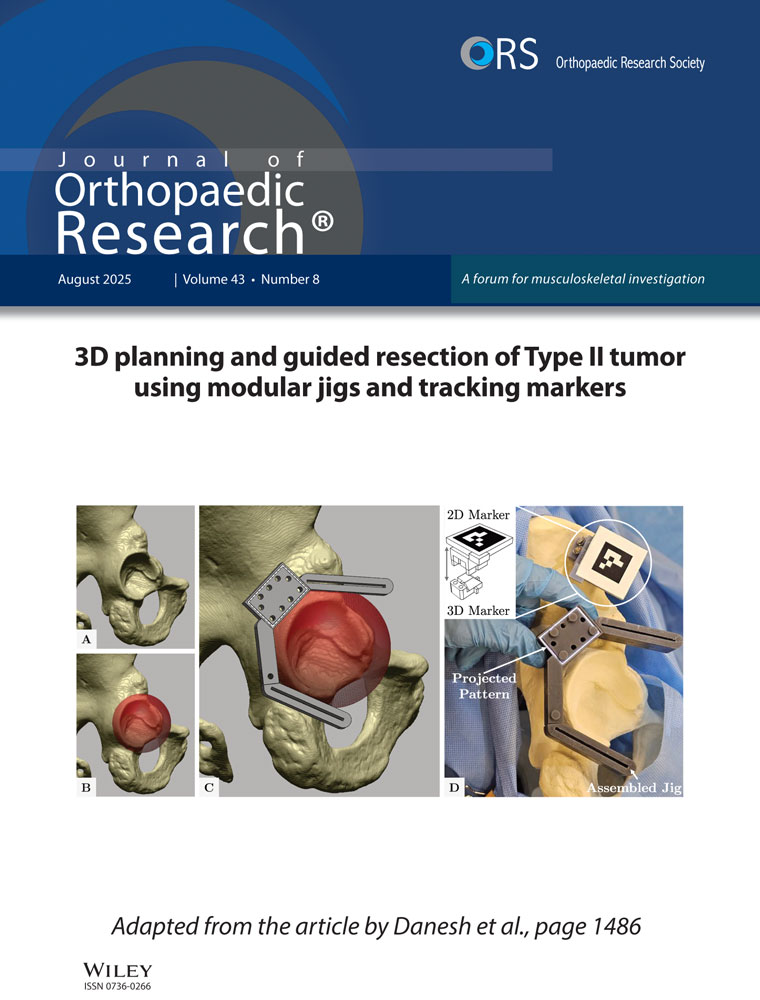Platelet-derived growth factor in fibrous musculoskeletal disorders: A study of pathologic tissue sections and in vitro primary cell cultures
Abstract
Despite the great variability in the clinical behavior of fibrous lesions of the musculoskeletal system, they are composed of cytologically similar fibrocytes. Receptors for estrogen or progesterone, or both, are present in some of these lesions and some increase their rate of growth during periods of high levels of sex steroid hormones. The platelet-derived growth factor-B (PDGF-B) proto-oncogene encodes the B chain of PDGF, a mitogen for fibrocytes. Tissue from aggressive fibromatosis, fibrous dysplasia, plantar fibromatosis, and recurrent plantar fibromatosis was analyzed with use of the polymerase chain reaction and in situ hybridization for the expression of PDGF-B and PDGF beta receptor. Cell culture was used to determine if estrogen and progesterone stimulation modulated the expression of PDGF-B. Aggressive fibromatosis, fibrous dysplasia, and recurrent plantar fibromatosis expressed PDGF-B; plantar fibromatosis, normal plantar fascia, normal fascia lata, and mature scar did not. All of the tissues expressed PDGF beta receptor. The level of expression in aggressive fibromatosis and fibrous dysplasia was four times that in the recurrent plantar fibromatosis. Estrogen and progesterone stimulation in aggressive fibromatosis resulted in an increase in the level of expression. Therefore, the detection of PDGF-B may be an adjunct in the pathologic identification of locally invasive lesions. Its production may be a common mechanism leading to a fibroproliferative response through deregulation of the control of growth by both paracrine and autocrine mechanisms.




